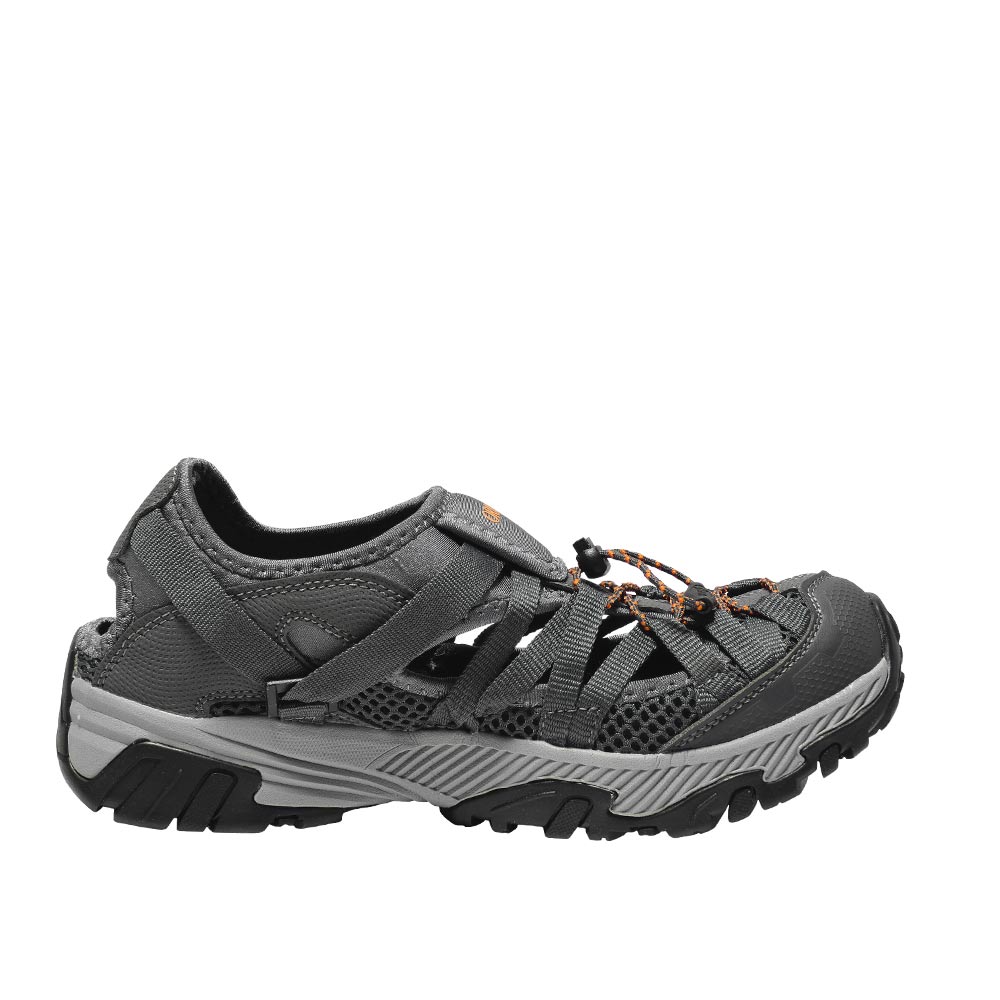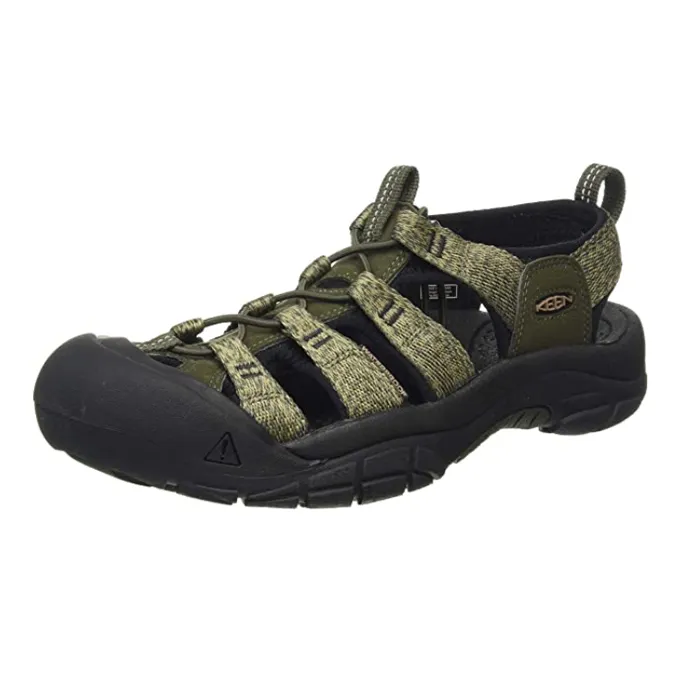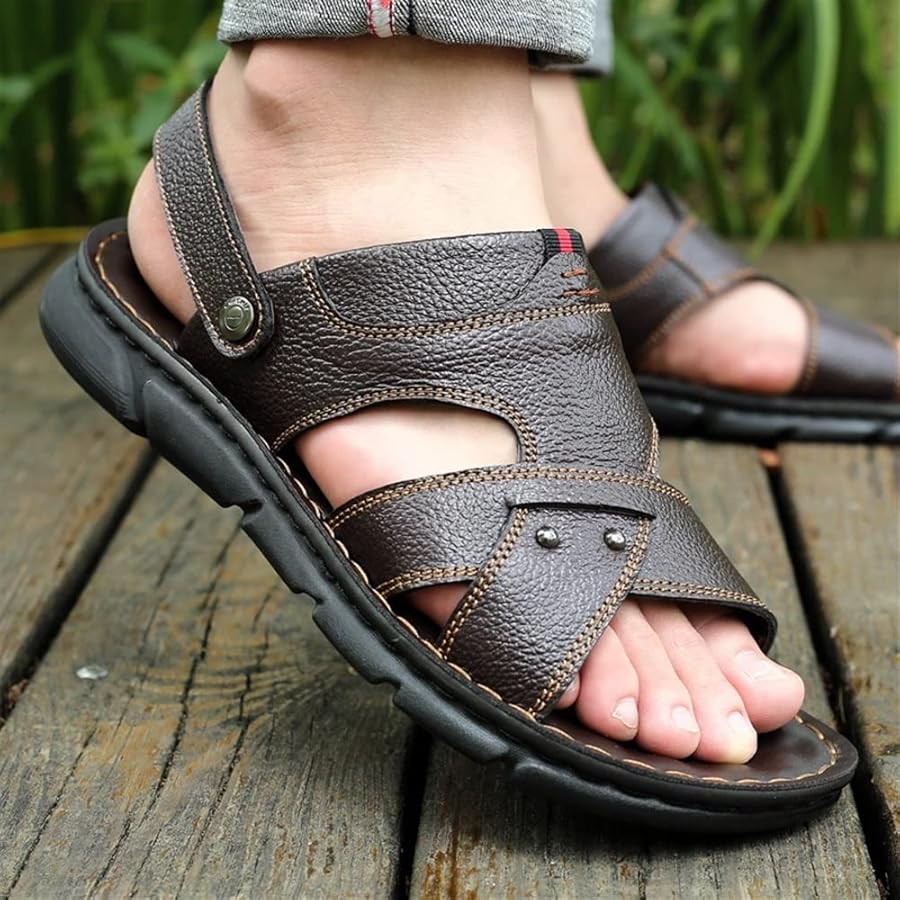When it comes to hiking, having the right footwear is essential to ensure comfort, protection, and stability on the trail. While hiking boots are a popular choice, waterproof hiking sandals are also a fantastic option, especially for warm weather or for hikes that involve water crossings. Here are some important factors to consider when choosing waterproof hiking sandals and a few recommended options to help you find the perfect pair for your outdoor adventures.
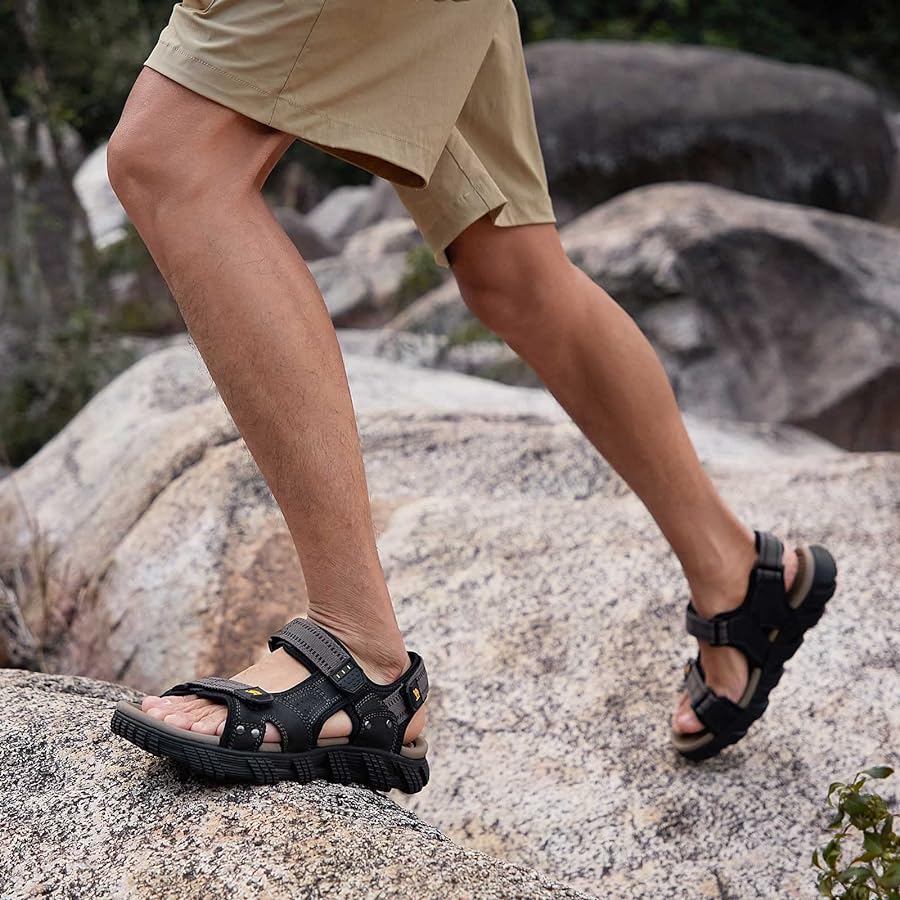
Top Features to Consider in Waterproof Hiking Sandals
When choosing the right waterproof hiking sandals, it’s important to focus on features that will keep your feet comfortable and protected during your aquatic adventures. These features not only determine the durability and comfort of the sandals but also their performance in wet conditions. Let’s dive into the aspects you should consider before making a purchase.
Materials and Quick Drying Capabilities
The materials used in waterproof hiking sandals are central to their functionality. Look for sandals made of synthetic materials such as polyester webbing, which are not only durable but also quick to dry. The faster your sandals dry, the less likely you are to develop blisters or other foot ailments associated with prolonged wetness. Additionally, antimicrobial treatments can prevent the growth of bacteria and reduce odors.
It’s also worth considering sandals that are designed with water-escaping features. These allow water to drain out quickly, preventing it from being trapped inside, which can lead to discomfort and increased weight. To sum up, ideal waterproof hiking sandals should have:
- Durable, synthetic materials that resist water damage
- Quick-drying capabilities to minimize moisture retention
- Antimicrobial properties to keep the sandals fresh
- Features that allow for water drainage to keep the sandal light and your foot dry
Outsole Traction and Stability
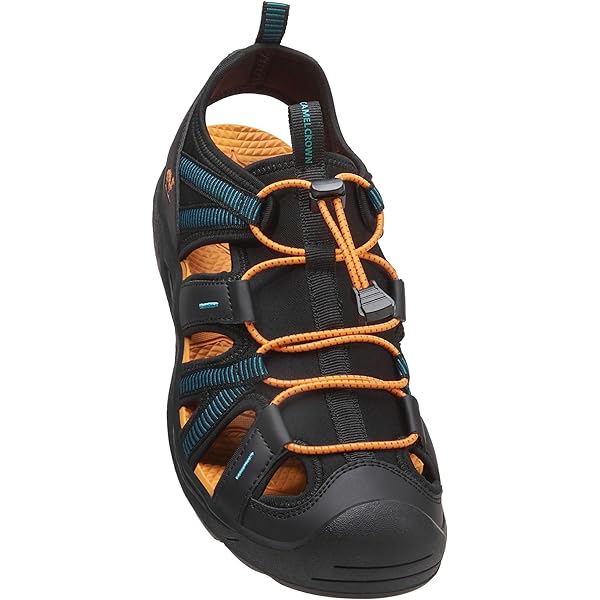
One of the most crucial features of waterproof hiking sandals is a reliable outsole with excellent traction. Since you will likely encounter slippery surfaces, look for sandals with siped or razor-siped outsoles, as these are designed to channel water away and prevent slippage.
Good hiking sandals also have lugs—these should be deep enough to provide grip on loose gravel, muddy banks, and rocky trails. Typically, lug depth can vary from shallow for light trails to 4mm or more for challenging terrains. Additionally, a sturdy midsole can provide underfoot protection and help to distribute the impact of each step, which can be essential when navigating through rocky or rugged water trails.
Closure Systems for Optimal Fit
A well-designed closure system is crucial for ensuring that your sandals stay securely on your feet in and out of the water. Common closure systems include velcro straps with buckles and bungee cords. Each system has its advantages:
- Velcro Straps with Buckles: These allow for fine adjustments and a customized fit but may wear out over time if exposed to harsh conditions.
- Bungee Cords: Bungee closures are great for water activities and are quick to adjust, though they can provide slightly less security compared to velcro straps.
When choosing sandals, consider how the closure system works with the rest of the sandal. For instance, multiple adjustable straps can accommodate various foot shapes and sizes, providing a snug fit that can reduce the risk of chafing. Moreover, a closure system that’s easy to operate when your hands are wet or muddy is always a plus.
In conclusion, when on the lookout for the perfect waterproof hiking sandals, consider the materials and drying speed, outsole traction and stability, as well as the closure system for an optimal fit. The right combination of these features will enhance your water hiking experience, ensuring that you stay comfortable, safe, and enjoy your outdoor activities to the fullest.
Best Waterproof Hiking Sandals of the Year
Navigating water trails and engaging in aquatic adventures requires a solid pair of waterproof hiking sandals. The right choice can significantly impact your comfort and safety. After rigorous testing and evaluation, we’ve rounded up the top waterproof hiking sandals of the year, perfect for enthusiasts who refuse to let water be an obstacle to their hiking objectives.
High-Performance Picks: Reviews and Comparisons
We understand that quality and performance are paramount for the discerning hiker. Our high-performance picks have been put through their paces, tested for durability, comfort, and resistance to water. With options like the Teva Hurricane XLT2, we have a pair featuring quick-drying webbing and a footbed designed for support and cushioning, providing an impressive balance between comfort and functionality on wet trails. The KEEN Newport H2 stands out with its protective toe guard and superior traction, making it ideal for more rugged terrain. Then there’s the Hoka Hopara 2, offering unparalleled cushioning and robust construction.
Each sandal has its own set of pros and cons, from weight considerations and toe protection to varying degrees of cushioning and drying speed. Our reviews delve deeper, comparing the intricate details that define their performance, helping you make an informed choice based on your specific hiking needs and preferences.
Budget-Friendly Options for Cost-Conscious Hikers
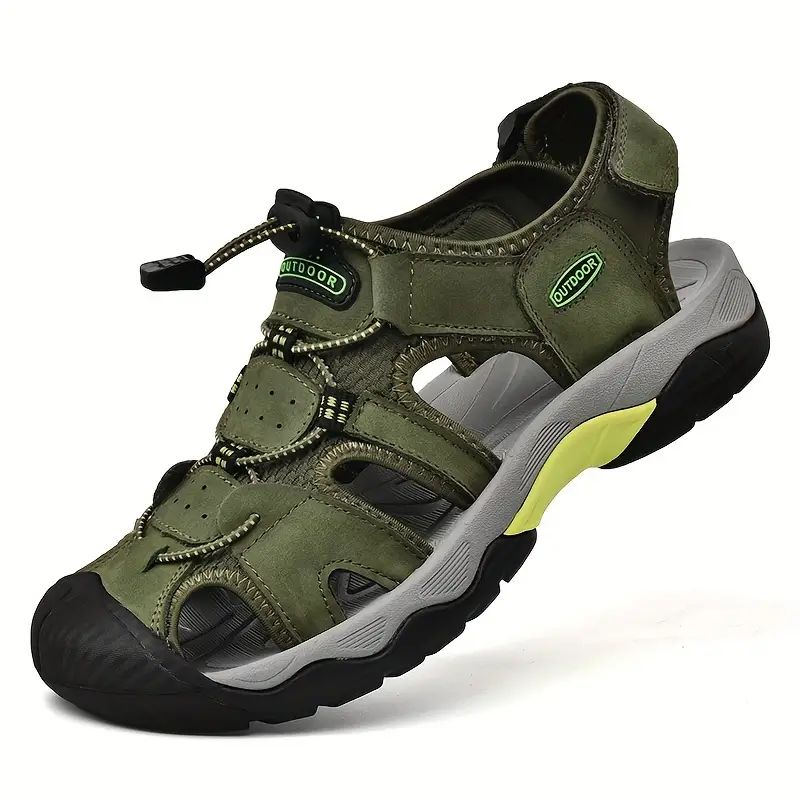
For those who are mindful of their spending without wanting to compromise on quality, there are budget-friendly options available that still perform admirably under wet conditions. The Teva Hurricane Drift, for instance, provides excellent floatability and satisfactory comfort at a fraction of the cost. Another affordable option is the Chaco Z/Cloud, which, despite its slower drying time, offers exceptional comfort and durability. By providing a detailed comparison of these more accessible options, we help ensure that cost doesn’t become a barrier to enjoying your water hiking experiences.
While our budget-friendly picks may not include all the high-end features, they still boast the essential characteristics needed for water hiking sandals, such as effective drainage, quick-drying materials, and adequate traction. It’s about finding the right balance between cost and functionality, and our reviewed sandals strike that balance effectively.
Practical Tips for Water Hiking
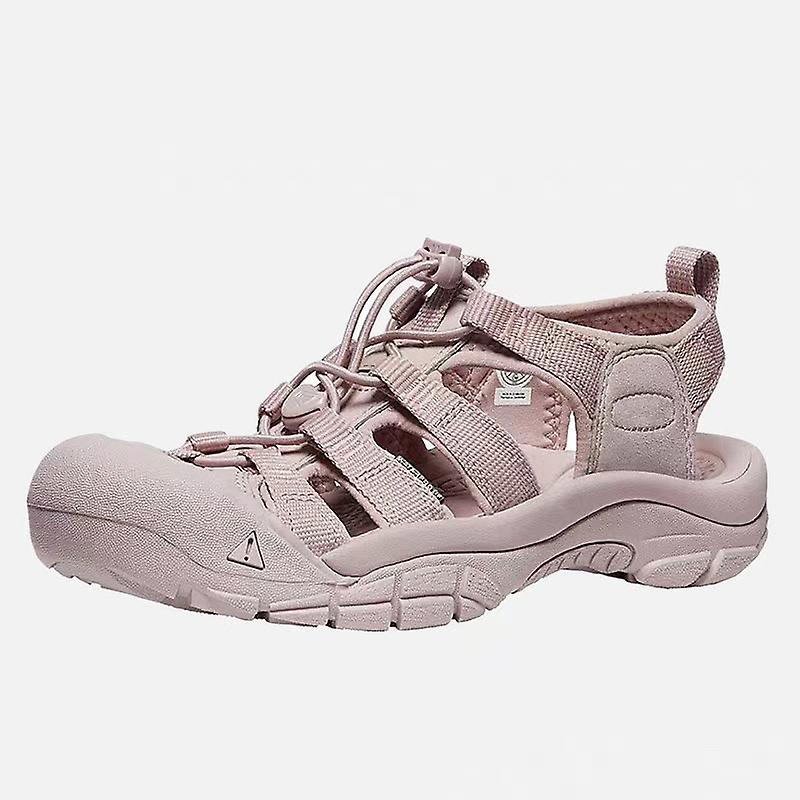
Water hiking combines the pleasures of exploring the great outdoors with the challenge of navigating through wet conditions. As a professional blogger and an SEO expert, I have compiled practical tips and considerations to ensure that your water hiking experience is both enjoyable and safe.
Protecting Your Feet in Different Water Terrains
Let’s start by looking at various terrains you might encounter and how to protect your feet:
- Rocky Rivers and Streams: In rocky conditions, opt for sandals with a closed-toe design such as the KEEN Newport H2 to protect against bruises and cuts. Look for a robust outsole that offers good traction to prevent slips.
- Sandy Beaches: Choose sandals with a fast drainage system to avoid carrying sand that can cause irritation. Models like the Teva Hurricane Drift, although floatable, should be avoided on sandy excursions due to their propensity for trapping sand.
- Muddy Banks: Traction is paramount in muddy environments. Select sandals with deep lugs and a secure closure system to keep your feet firmly in place, preventing any unwanted sliding and protecting you from potential falls.
- Forest Trail Water Crossings: When crossing streams on a trail, a quick-drying sandal is necessary. The Teva Hurricane XLT2, with its quick-drying webbing, is an excellent choice to ensure that your feet remain comfortable and dry as fast as possible after leaving the water.
When choosing your sandals, consider the potential terrains and water conditions you might face. Adjustability, materials, and specific design elements such as thicker soles for sharp underwater surfaces or lightweight designs for ease of swimming, are all factors that will contribute to the safety and comfort of your water hiking experience.
When to Wear Socks with Waterproof Hiking Sandals
Wearing socks with waterproof hiking sandals can seem counterintuitive, especially when expecting to encounter water. However, there are times when pairing the two can be beneficial:
- Cold Conditions: If the water is cold or you are hiking in cooler weather, socks can add a layer of thermal protection, keeping your feet warm.
- Extended Hikes: Socks can help prevent chafing during long hikes. Ensure your sandals and socks work well together, fitting comfortably without being too tight.
- Campsite Use: After a day of hiking, slipping into sandals with socks can offer relaxation and reprieve for your feet during leisurely campsite moments.
Generally, avoid wearing socks if you are entering the water. Wet socks can lead to discomfort and blisters. However, in dry conditions or when a little extra comfort is needed, socks can be a hiker’s best friend. Make sure to select moisture-wicking socks that dry quickly and provide an additional layer of protection.
In conclusion, water hiking entails more than just selecting the right footwear. It’s about understanding the environment, knowing the capabilities of your gear, and making decisions based on the anticipated challenges of your hike. With careful consideration of these aspects, you’ll be well-equipped for an adventure filled with splashes and smiles.
